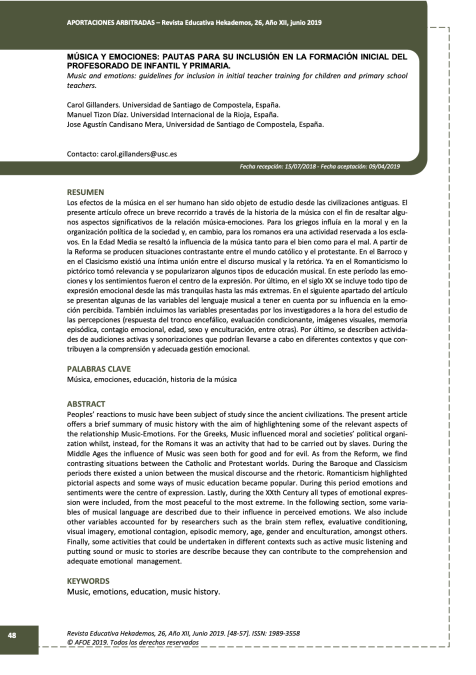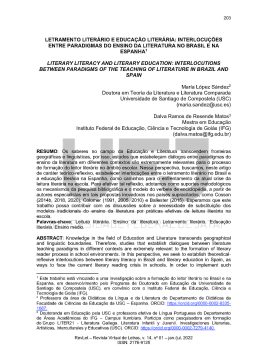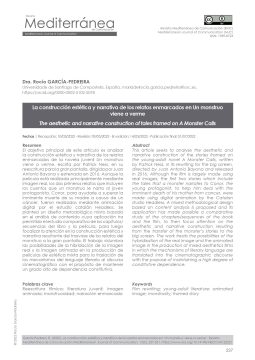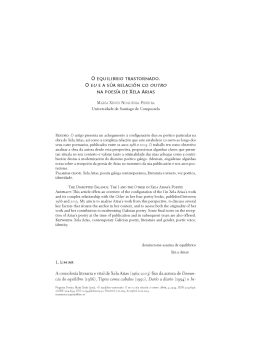Music and emotions: guidelines for inclusion in initial teacher training for children and primary school teachers

Common spaces at school: community projects through Art education
21 February 2022
O Premio Jules Verne na literatura galega. A necesidade da inclusión das obras premiadas nas aulas galegas
21 February 2022Music and emotions: guidelines for inclusion in initial teacher training for children and primary school teachers
- Carol Gillanders
- José Agustín Candisano Mera
- Manuel Tizón Díaz
Year of publication:
2019
How to quote
Gillanders, C., Tizón Díaz, M.A., & Candisano Mera, J.A. (2019). Música y emociones: pautas para su inclusión en la formación inicial del profesorado de infantil y primaria. Hekademos: revista educativa digital, (26), 48-57. https://www.hekademos.com/index.php/hekademos/issue/view/26-junio-2019
Abstract
Peoples’ reactions to music have been subject of study since the ancient civilizations. The present article offers a brief summary of music history with the aim of highlightening some of the relevant aspects of the relationship Music-Emotions. For the Greeks, Music influenced moral and societies’ political organization whilst, instead, for the Romans it was an activity that had to be carried out by slaves. During the Middle Ages the influence of Music was seen both for good and for evil. As from the Reform, we find contrasting situations between the Catholic and Protestant worlds. During the Baroque and Classicism periods there existed a union between the musical discourse and the rhetoric. Romanticism highlighted pictorial aspects and some ways of music education became popular. During this period emotions and sentiments were the centre of expression. Lastly, during the XXth Century all types of emotional expression were included, from the most peaceful to the most extreme. In the following section, some variables of musical language are described due to their influence in perceived emotions. We also include other variables accounted for by researchers such as the brain stem reflex, evaluative conditioning, visual imagery, emotional contagion, episodic memory, age, gender and enculturation, amongst others. Finally, some activities that could be undertaken in different contexts such as active music listening and putting sound or music to stories are describe because they can contribute to the comprehension and adequate emotional management.



